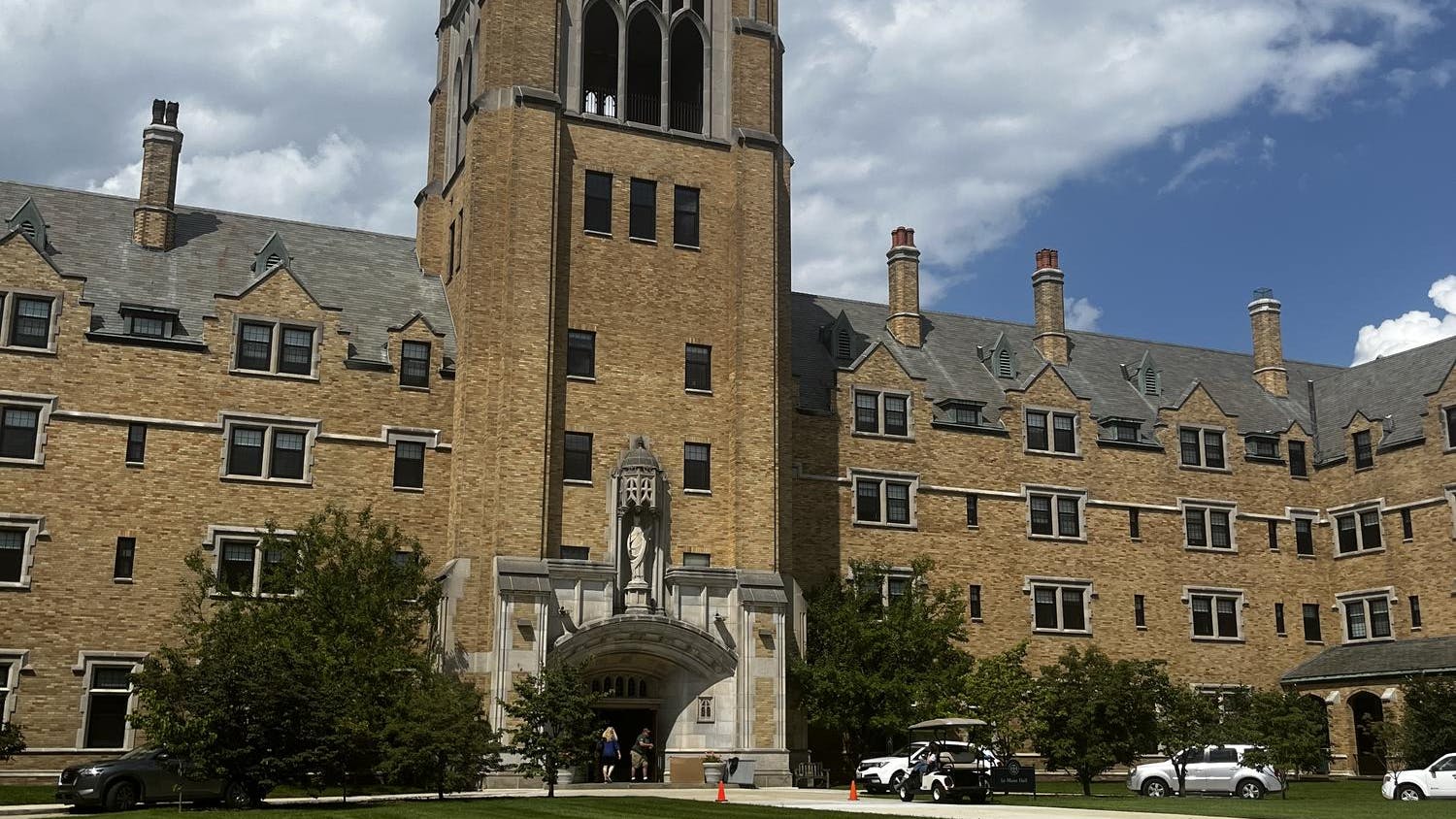Saint Mary’s junior Brianna Kozemzak and assistant professor of math and computer science Dr. Beth Wolf presented their Student Independent Study Research (SISTAR) project titled “Analyzing the Effect of Delay in Discrete Stochastic Models and an Application to mumps Epidemics” to faculty and students Thursday.
The pair started their research in May 2015, studying recent mumps outbreaks in the National Hockey League (NHL) as well as a variety of outbreaks in the Indianapolis area, Kozemzak said.
“The [Indiana State Department of Health] is publishing weekly updates of confirmed cases,” Kozemzak said. “As of now there are 81 confirmed cases.”
Kozemzak said the mumps are a single-stranded RNA virus which can be spread through respiratory secretions. Also known as parotitis, systems include inflammation of the parotid gland located in the cheeks, headaches, fatigue and body aches.
According to Kozemzak, due to modern medical practices, the mumps are no longer fatal. Symptom onsets typically last 17 days on average, after being infected, Kozemzak said. However, about one third of the population can be asymptomatic.
“The rate from which someone gets sick depends on the number of exposed and infected,” Kozemzak said.
In order to do their research, the pair used mathematical modeling to make predictions regarding people infected by the mumps.
“We’d like to be able to say, on average, how many people are going to get sick, what the probability of one sick person starting an epidemic, and if there is an epidemic, how long it is going to last,” Wolf said.
Before they could start, Wolf taught Kozemzak the necessary background information.
“Once she worked through the background material, by the time we got to the summer, it wasn’t like working with a student, it’s just working with someone else who knows the material,” Wolf said.
Wolf and Kozemzak focused their research on smaller populations.
“Right now what we’re really seeing is the transmission of the disease in close-knit communities,” Kozemzak said.
“Because we’re modeling small populations, we want a discrete model that keeps track of the whole number population counts over time,” Wolf said. “The numbers of people are whole numbers but time is a continuous variable.”
They are also using a stochastic model, meaning a random model of people susceptible to, infected by and recovered from the mumps. Kozemzak said this is viable whether someone is vaccinated for the mumps or not.
“Vaccinations didn’t really affect the probability of getting the disease,” Kozemzak said. “There’s also a question of whether or not there are vaccine failures or not.”
Although their research was only over the summer, they were able to collect an abundant amount of data by entering an algorithm into the computer so they were able to attain a numerical average. According to Kozemzak, this is termed the Monte Carlo simulation.
Kozemzak said most models do not include the 2-4 week period of delay before symptom onsets into their predictions. This is what sets their research apart from others.
“We want to delay it because there is that two to four week period,” Kozemzak said. “This means the process is no longer satisfying the Markov property when we include delay.”
According to Wolf, the Markov property is typically used for predictions of mumps epidemics using a continuous time as a continuous variable. They solved the problem by creating their own model using a fixed period delay of 17 days.
The pair found that in a 15 person population there was a 20 percent increase in the probability of outbreak when they added the delay. In a population of 30 people there was was a 40 percent increase.
First year Sierra Wu said the presentation was impressive and informative.
“I didn’t know that mathematical modeling was so useful,” Wu said. “I was impressed she could make a model from something so quantitative.”
Kozemzak said the SISTAR project helped her decide she wanted to stick with doing research.
“After doing the research, I just kind of want to do research now,” Kozemzak said. “I have another experience lined up for next summer already.”
“I would encourage anyone with a chance to apply for a research grant to do it,” Wolf said.
Kozemzak agreed with her mentor.
“It was so much fun; I learned a lot. The stuff I learned over the summer was beyond my course work.”













